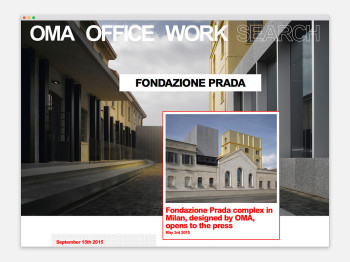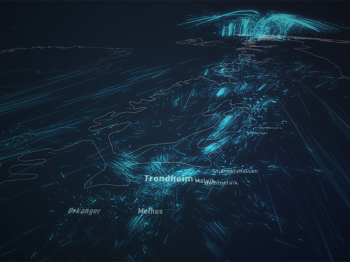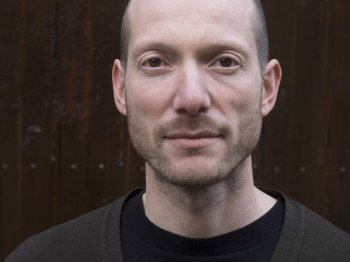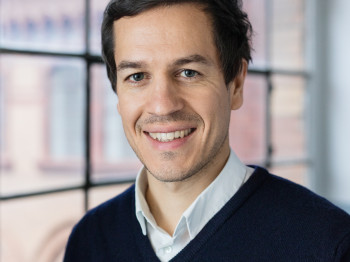
On the Record
Creating new shared territories for discursive and collaborative practices
About the Residency
On the Record, a series of discussions and workshops presented by CAST and the Department of Architecture, focuses on the public aspects of research. Irina Chernyakova, Director of Publications and Exhibitions, MIT Department of Architecture, collaborates with artists and designers to address the following questions: Why make research public? For whom? How is this done and by whom is it controlled? Investigating extra-architectural and artistic practices, such as publications, exhibitions, models, performances and events, the discussions center on how these platforms create new shared territories for discursive and collaborative practices. Rather than isolating each form, the workshops focus on moments of overlap to examine how new practices force a reconsideration of knowledge production and shape how new publics are produced.
Prominent artists, designers and publishers will lead workshops to activate many voices so that we can discover new ways to think critically about acts of publishing, both within MIT and in the field at large. In breaking down the possible acts of “making things public,” visiting artists and MIT faculty and students take into account varying speeds and scales of production, decibels of conversation, source material, economy and methods of production and relationships with institutions.
During their residency at MIT, NODE Berlin Oslo and Bengler experimented with the MIT Center for Advanced Visual Studies (CAVS) Archive, maintained by the Program in Art, Culture, and Technology, using its source material as a subject and point of departure to develop a publishing concept that could unfold in the space of print and a physical domain as an exhibition. NODE/Bengler will contribute to the ongoing interpretation, actualization and inquiry of archival methodologies and publication, most notably by creating the digital collection for the CAVS Special Collection.
Presented by the MIT Center for Art, Science & Technology (CAST and the MIT Department of Architecture.
Public Events
Past Events
On the Record: Broadcasting Practices Workshop with NODE Berlin Oslo/Bengler
Saturday, February 20, 2016
Workshop 10:00am-5:00pm
Reception and presentations 5:00-6:30pm
Wiesner Building, E15
20 Ames Street, Cambridge, MA 02139
Residency Schedule
NODE Berlin Oslo/Bengler Residency
February 17-21, 2016
Class Visits
February 17-19, 2016
4.314 / 4.315 Advanced Workshop in Artistic Practice and Transdiciplinary Research: Experimental Publishing and Archival Research
Instructors Liesbeth Bik & Jos Van der Pol
Student Discussion
February 19, 2016 / 6:00pm
Workshop & Presentations
On the Record: Broadcasting Practices Workshop
February 20, 2016 / 10:00am-6:30pm
The first workshop will be led by Bengler and NODE Berlin Oslo, a software design practice and graphic design practice, respectively. Bengler and NODE are working with ACT to consider the Center for Advanced Visual Studies (CAVS) archive, which is maintained by ACT. CAVS was founded in 1967 by Professor Gyorgy Kepes; the Center hosted a wide range of innovators in the visual arts, environmental arts, dance, and new media. CAVS Fellows included Otto Piene, Maryanne Amacher, Stan van der Beek, Lowry Burgess, Peter Campus, Muriel Cooper, Juan Downey, Charlotte Moorman, Nam June Paik, Yvonne Rainer, Alan Sonfist and many others. In 2009, CAVS merged with the Visual Arts Program to form ACT.
Bengler/NODE use the source material of the archive as a subject and point of departure to develop a publishing concept that could unfold in the space of print, physical domain, and digital domain as publication and exhibition. Their work will contribute to the ongoing inquiry, interpretation, and actualization of archival methodologies and publication.
Bengler/NODE proposed two distinct modes of wayfinding the collection: rational drill down and associative exploration. Situated within a broader engagement with ACT and MIT, this workshop invites students to learn about the collection and experiment with the latter notion of associative exploration. How might relations in the work of CAVS fellows and in the institution be visually represented and interpreted? Students will be joined by scholars and affiliates of CAST and ACT for the day-long workshop.
Collaborators at MIT
Irina Chernyakova, Director of Publications and Exhibitions, MIT Department of Architecture
About the Artists
NODE is a design studio founded in 2003 by Anders Hofgaard and Serge Rompza with offices in Berlin and Oslo. The studio works collaboratively for a diverse range of clients focusing on print, identity, exhibition, and interactive design. In addition to studio projects, NODE lectures and conducts workshops for art and design academies in Europe and the United States.
The distinct feature of NODE lies in its relational approach to graphic design. Its portfolio could be described as a unique series of field notes reflecting efforts to create a synthesis recorded through experimental tests. The activities of NODE studio are best characterized as a form of design authoring, informed by a documentary attention to the needs of its clients. In 2011, the studio redesigned the visual identity of Haus der Kulturen der Welt (HKW) in Berlin and has produced a wide range of designs for the institution, including Textures of the Anthropocene: Grain Vapor Ray, published by MIT Press.
In 2015, NODE collaborated with Oslo-based digital invention studio Bengler to design and engineer a redefined web presence for the Office of Metropolitan Architecture (OMA), employing new tools that work as condensers of ideas, works, identities, research, history, people, data and geographies. For this project, Bengler developed Sanity, a content curation tool to make maintaining complex, connected datasets enjoyable, while also facilitating the reuse of material in multiple forms to reach different users. Modeling internal data and embracing external information, oma.eu functions as an omnivorous sensor, tracing OMA’s work from inception to post-occupancy.
Even Westvang and Simen Svale Skogsrud are principals of Bengler. Central to their practice is the continuous exploration of the communicative and expressive affordances of technology. Westvang and Skogsrud have collaborated for twenty years on television, museum audio-visuals, mobile games, social media and installation artworks. Westvang specializes in concept development, user interface design and data visualization. Skogsrud specializes in product design, software architecture and broad spectrum tinkering. Skogsrud is the original creator of Grbl, the industry standard motion control system for maker-grade 3D printers, milling machines, and laser cutters.
Bengler advocates for making more public data available through projects such as Westvang’s series of experimental data visualizations, which have been featured in The Guardian, Fast Company, and Norwegian national media. A series of publishing commissions turned their interests towards exploring the future of publishing and the challenges of facilitating fluid collaboration while manipulating complex data structures. Recent projects include Sanity, created for OMA’s website and Vega, an open-source publishing system for open-access science, to move scientific publishing beyond email-ping-pong and static PDFs by providing publishers and authors with richer, yet tailored modes of collaboration, review and presentation. Bengler is currently working on an open-ended exploration to describe and organize the collections of the Norwegian National Museum using machine learning and automated classification to build new interfaces for end-user navigation.
Learn more about NODE Berlin Oslo and Bengler.
In the Media
CBCNet: Interview with NODE
Fast Company: Watch as 30,000 Norwegians Move Across the Globe like Ballistic Missiles
File//features: NODE Berlin Oslo
Grist: Magic disco ball tells you everything you need to know about climate change
The Guardian: How 300,000 people move home, animation
It’s That Nice: NODE
Motherboard: How to 3D-Print Norway
Wired: Own a slice of Norwegian fjord thanks to Terrafab and 3D printing












